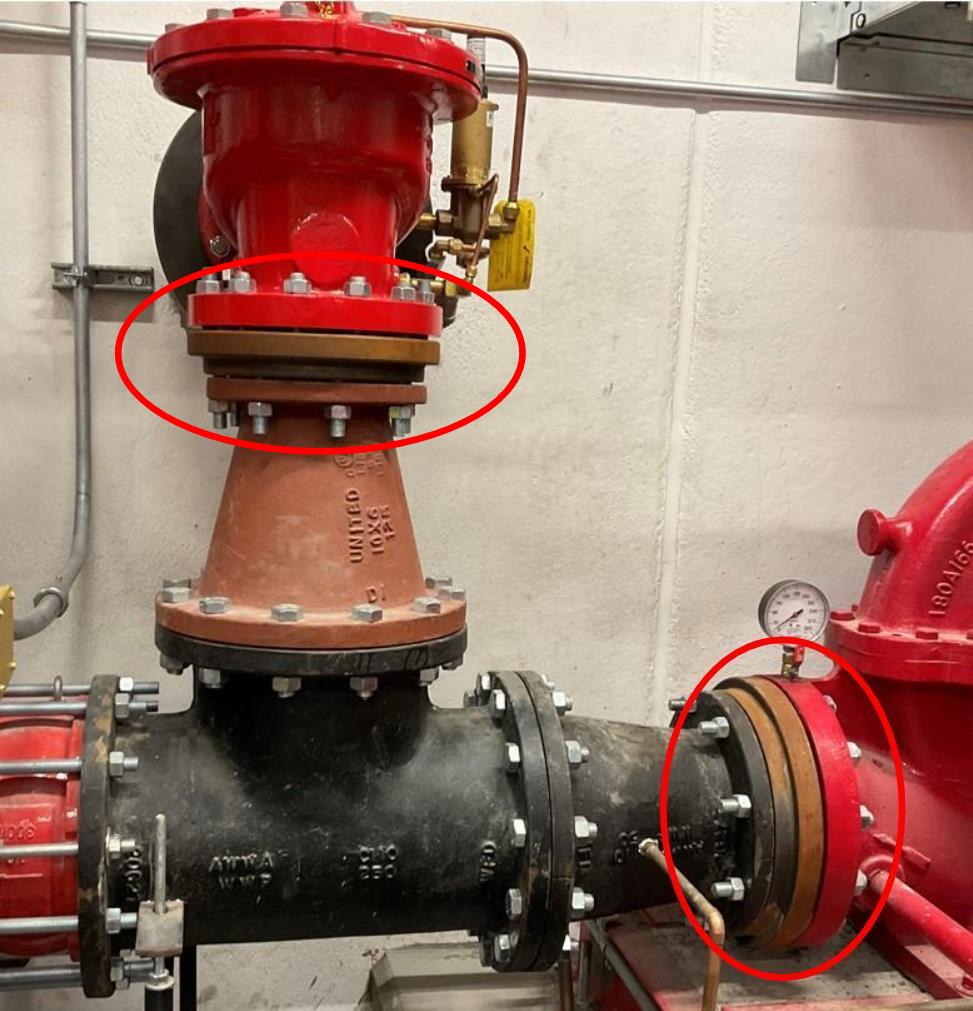
 Flanges and flanged fittings are rated by pressure class. The 125# pressure class flanged fittings carry a 200 psi pressure rating, while the 250# pressure class fittings carry a 500 psi pressure rating. When a fire pump vendor has a discharge pressure that exceeds 200 psi, they drill the discharge flange with a 250# pressure class bolt pattern (logically, more bolts are required for 250# than for 125#) and provide a main relief valve (if required) with a 250# inlet flange. If a fitting has a 250# flange on one outlet and a 125# flange on the other (as in the flanged concentric reducers in the photo) the fitting is rated for the lesser pressure class.
Flanges and flanged fittings are rated by pressure class. The 125# pressure class flanged fittings carry a 200 psi pressure rating, while the 250# pressure class fittings carry a 500 psi pressure rating. When a fire pump vendor has a discharge pressure that exceeds 200 psi, they drill the discharge flange with a 250# pressure class bolt pattern (logically, more bolts are required for 250# than for 125#) and provide a main relief valve (if required) with a 250# inlet flange. If a fitting has a 250# flange on one outlet and a 125# flange on the other (as in the flanged concentric reducers in the photo) the fitting is rated for the lesser pressure class.
We recently observed a fire pump installation where the sprinkler contractor utilized flanged adapters to transition from 250# flanges to 125# flanges rather than securing the correctly flanged concentric reducer. This particular pump is capable of a churn pressure of approximately 220 psi. All pipe, fittings, and valves between and including the fire pump discharge flange and the fire pump discharge control valve (e.g.: main relief valve, discharge check valve, test header components, etc.) must be rated for the maximum anticipated fire pump churn pressure. In the provided picture, this pressure would be developed with the pressure limiting device (“PLD”) disengaged and would be the net churn pressure plus maximum anticipated static pressure at the suction flange.
In the example, the contractor unfortunately made a lot of effort to adapt to an underrated flange and will have a lot of difficulty fixing this self-created problem. It is important to note here that the contractor did not submit the flanged fittings in their material submittal. We are sure they would not have submitted the exact configuration that was installed, and as a result we may not have been able to prevent the errors at the shop submittal stage. However, it is important that we recognize that the pump vendor provided the 250# flanges for a reason.

